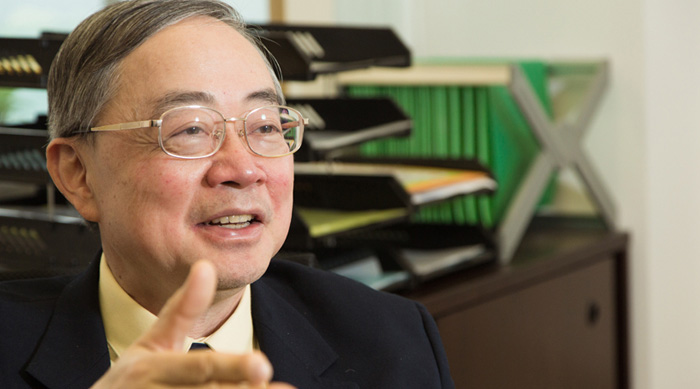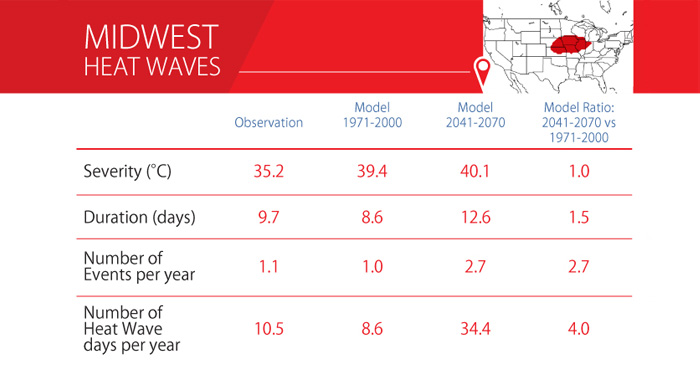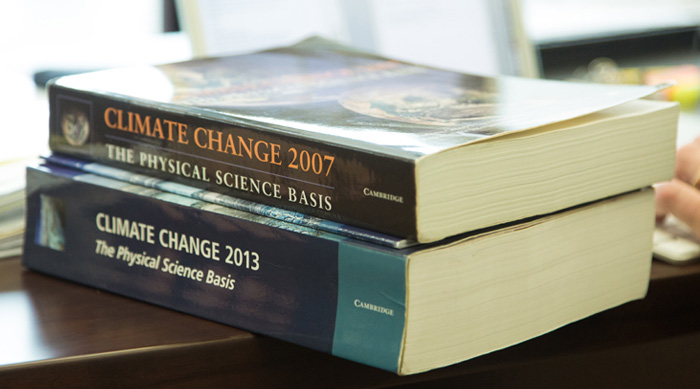Soaring Temperatures are Pushing the World to Breaking Point: Research from a lead author of Nobel Prize-winning research shows

Prof. Gabriel Lau Ngar-cheung
Department of Geography and Resource Management
Institute of Environment, Energy and Sustainability
Thanks to global warming, heat waves will triple in frequency and soon take up half the summer, according to the work of Prof. Gabriel Lau Ngar-cheung, AXA Professor of Geography and Resource Management and Director of the Institute of Environment, Energy and Sustainability at The Chinese University of Hong Kong.
The definition of a heat wave is that average temperatures rise into the highest 10 per cent of their typical range and remain there for three or more days. The cause of a heat wave is a "dome" of hot air that forms during very clear weather with more sunshine. The land becomes baked, and the dry conditions enhance "sensible heat" that can be felt, as opposed to the latent heat associated with moisture.
The heat-wave dome then holds at bay other weather systems. Research continues in an attempt to quantify, as surmised, the effect of remote processes in causing and extending heat waves. For instance, it is likely but not yet proven that a rise in sea temperatures in one part of the world can augment a heat wave in another part.

Heat waves cause a significant number of deaths in their most-severe form, particularly among elderly people. Heat waves also cause a very dry climate, and ultimately droughts. Agriculture suffers, and forest fires increase in frequency and magnitude. In the American West, there are now fire and drought emergencies virtually every summer.
Professor Lau's computer modelling indicates that heat waves will lengthen from the typical three to four days, to seven to 10 days. Instead of one per summer, there will be three or four. The combined effect is profound, meaning heat waves occur for more than 50 per cent of the summer season in many parts of the world, instead of just a few days per year.
Already, the American Great Plains suffer frequent heat waves. Professor Lau has compiled data on the weather patterns there from 1971 to 2000. He has then predicted the change in severity, duration and number of heat waves between 2041 and 2070. To achieve that forecast, Professor Lau changes the boundary conditions in his computer models by inserting different forecasts for levels of CO2 and the venting of other greenhouse gases. His results:
Heat Waves in the US Midwest
|
|
2000 |
2050 |
Increase by |
|
Duration (days per year) |
8.6 |
12.6 |
1.5 |
|
No. of heat waves per year |
1 |
2.7 |
2.7 |
|
No. of heat-wave days per year |
8.6 |
34.4 |
4 |
The impact is similar outside the Midwest, although Professor Lau first studied the United States since he was based there. Still, he notes that in his youth, his home town of Hong Kong had only three to four "hot nights" per summer of more than 28°C. Hong Kong Observatory records show there are now 15 each year, a five-fold increase.
Professor Lau has devoted his 40-year career to climate research, scouring through observational climate records and prediction computer models to "map" the progress of climate variations and their likely future path. After 35 years at Princeton, he returned to Hong Kong almost two years ago.
Heat waves have been his specific focus for the better part of the last decade. North America was his original focus, but his gaze then shifted to Europe and then to Asia. The results are equally if not more alarming:
Heat Waves in Europe and China
|
|
Europe |
China |
||
|
In the past |
Late 21st Century |
In the Past |
Late 21st Century |
|
|
Duration(days per year) |
11.7 |
16.0 |
12.3 |
26.6 |
|
No. of heat waves per year |
1.9 |
4.3 |
1.4 |
3.6 |
|
No. of heat-wave days per year |
22.6 |
69.0 |
17.0 |
95.9 |
"Global warming is so pervasive that all these regions will experience some increase in heat waves," Professor Lau says. He feels sure that examination of other parts of the world would lead to similar results. "Climate change has profound implications on the socioeconomic well-being of the entire global population."
Professor Lau has played a prominent role in the work of the United Nation's Intergovernmental Panel on Climate Change (IPCC). The panel combines the work of thousands of climate scientists around the world in the largest scientific assessment of climate change ever attempted.

The IPCC, which was set up in 1988, publishes an assessment report every six to seven years. He first contributed to the 2007 report. Then as a lead author, Professor Lau helped draft the final chapter of the most-recent assessment report, published in 2013. The panel shared the 2007 Nobel Peace Prize with former U.S. vice president Al Gore, after the release of his climate-change documentary An Inconvenient Truth.
"Unless we really take measures in limiting emissions and conserving energy consumption, global warming will continue," Professor Lau says. "More heat waves will follow suit."
By Alex Frew McMillan
This article was originally published on CUHK Homepage in Apr 2015.

